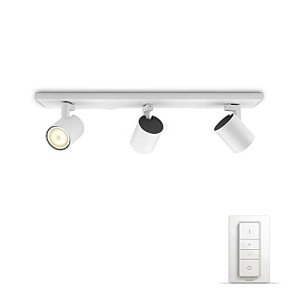Industrial Lamps in the UK: Illuminating Industries and Workspaces
In an age where effective lighting options play an essential role in boosting productivity and security in different industrial settings, industrial lamps have emerged as essential tools for factories, storage facilities, workshops, and more. The UK's market for industrial lighting is rapidly progressing, driven by advancements in technology, a growing focus on energy performance, and stringent safety regulations. This article explores the various types of industrial lamps offered in the UK, their applications, and the factors to consider that need to be made when selecting the proper lighting services for industrial environments.
Comprehending Industrial Lamps
Industrial lamps are created specifically for usage in a range of industrial settings. They offer the needed lighting while also thinking about the special difficulties posed by such environments, consisting of dust, moisture, high ceilings, and variable temperature levels. Industrial lamps are available in various kinds, including LED, fluorescent, and metal halide lighting, each with its own set of qualities and benefits.
Kinds Of Industrial Lamps
LED Industrial Lamps:
- Description: LED (Light Emitting Diode) industrial lamps are energy-efficient, long-lasting, and offer outstanding lighting.
- Advantages:
- Energy performance (up to 80% less energy intake)
- Long lifespan (as much as 50,000 hours)
- Low heat emission
- Instant brightness with no flickering
- Applications: Factories, storage facilities, and building and construction websites.
Fluorescent Industrial Lamps:
- Description: These lamps give off light through the excitation of gas, typically used in environments needing uniform lighting.
- Benefits:
- Good color rendering
- Economical
- Various shapes and sizes
- Applications: Workshops, garages, and assembly lines.
Metal Halide Industrial Lamps:
- Description: This kind of gas discharge lamp produces a bright, white light and is often utilized in big spaces.
- Benefits:
- High strength and brightness
- Outstanding for sports places, parking lots, and large industrial centers
- Applications: Warehouses, loading docks, and outdoor locations.
Contrast Table of Different Types of Industrial Lamps
| Lamp Type | Energy Efficiency | Life-span | Brightness | Application Areas |
|---|---|---|---|---|
| LED Industrial Lamps | As much as 80% | Up to 50,000 hours | Extremely High | Factories, Construction Sites |
| Fluorescent | Moderate | 7,000 - 15,000 hours | Moderate to High | Workshops, Garages |
| Metal Halide | Moderate | 15,000-20,000 hours | High | Storage Facilities, Outdoor Areas |
Choosing Industrial Lamps
When picking industrial lamps, a number of factors need to be thought about. These consist of:
- Type of Application: Different areas have varying lighting requirements. For example, high-precision jobs might require brighter, more concentrated lighting compared to general work space lighting.
- Energy Efficiency: With increasing energy costs and ecological concerns, choosing lamps with high energy efficiency can cause considerable expense savings gradually.
- Life-span: Longer-lasting lamps decrease maintenance expenses and downtime, making them more effective in busy industrial settings.
- Security Standards: Compliance with safety guidelines is crucial. Industrial lamps need to be created to stand up to extreme conditions, consisting of wetness, dust, and effects.
- Expense: While upfront expenses matter, the long-term savings achieved via energy-efficient and lasting lamps ought to likewise be considered.
Benefits of Appropriate Industrial Lighting
- Enhanced Safety: Proper illumination minimizes the threat of mishaps and injuries in industrial environments.
- Increased Productivity: Adequate lighting promotes much better presence, helping in the effectiveness of workers.
- Cost Savings: Energy-efficient lamps result in lower electrical power bills and less frequent replacements.
- Enhanced Quality Control: Good lighting enables for better inspection processes, ultimately enhancing product quality.
Regularly Asked Questions (FAQs)
Q1. How do I figure out the right kind of industrial lamp for my facility?A1. Examine the particular lighting needs and conditions of your center. Think about aspects such as the jobs being carried out, the size of the area, and any regulatory requirements.
Q2. Are LED lights worth the financial investment in an industrial setting?A2. Yes, LED lights offer considerable long-lasting savings due to lower energy consumption and longer lifespans, making them an economical option in the long run.
Q3. Can I set up industrial lamps myself?A3. While some individuals might have the skills to install lamps, it is typically advised to employ a certified electrician to ensure compliance with security requirements and regional guidelines.
Q4. What Lighting And Lamps is needed for industrial lamps?A4. Regular evaluations for damage, cleansing of lights, and timely replacement of faulty lamps are necessary to maintain optimal performance.
Q5. What are the current patterns in industrial lighting technology?A5. Advances in smart lighting systems, consisting of IoT (Internet of Things) integration and sophisticated energy management solutions, are at the leading edge of industrial lighting innovation.
The right industrial lamps are vital to ensuring security, productivity, and expense performance in different industrial settings. The UK market offers a series of lighting solutions, from LED lamps to fluorescent and metal halide alternatives, each appropriate for various applications. By comprehending the features and benefits of these lighting types and taking essential considerations into account, organizations can make informed choices that will brighten their work areas successfully while optimizing efficiency and saving expenses. Investing in the right industrial lighting not just enhances general atmosphere however also fosters a safer and more efficient work environment.

